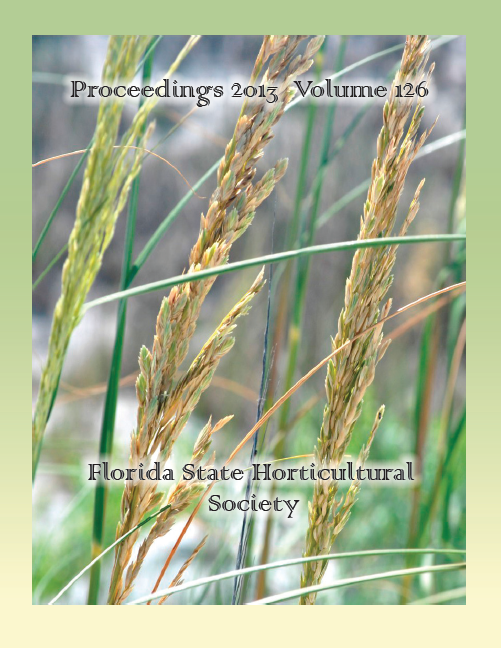Published 2013-12-01
Keywords
- Cucurbita pepo,
- protected agriculture,
- soilless culture,
- specialty vegetable,
- integrated pest management
Abstract
Mini or “baby” vegetables have become increasingly popular items for restaurant chefs and retail sales. Summer squash (Cucurbita pepoL.) is generally open-field cultivated and climate, insect, and disease pressures create challenging conditions for growers and shippers who produce and market this delicate, immature fruit. In order to overcome these challenges, in Spring 2012 and Fall/Winter 2012, five squash cultivars, including zucchini and yellow-summer, were grown hydroponically in a protected agriculture structure known as a tunnel and compared for yield of baby-size fruit. Squash fruit less than 10 cm (4 inches) in length were graded as “baby,” while those longer than 10 cm (4 inches) were graded as “fancy.” In Spring and Fall/Winter 2012, ‘Gentry’ produced the most (number and weight) baby squash while ‘Lazor’ and ‘Spineless King’ produced the most fancy fruit. ‘Gentry’ also produced more culls than the other cultivars. ‘Gentry’ produced over 375 baby squash per m 2in Spring and over 250 per m2 in Fall/Winter (30 harvests and 43 harvests, respectively), while the other cultivars produced only about 25% of that. ‘Lazor’ produced more male blossoms suitable for sale, compared to the other cultivars. Squash plants will produce numerous high quality babysized fruit and edible blossoms when grown hydroponically in a reduced pesticide environment in a tunnel where they can be harvested, packaged, and distributed to buyers over several months of the year.

